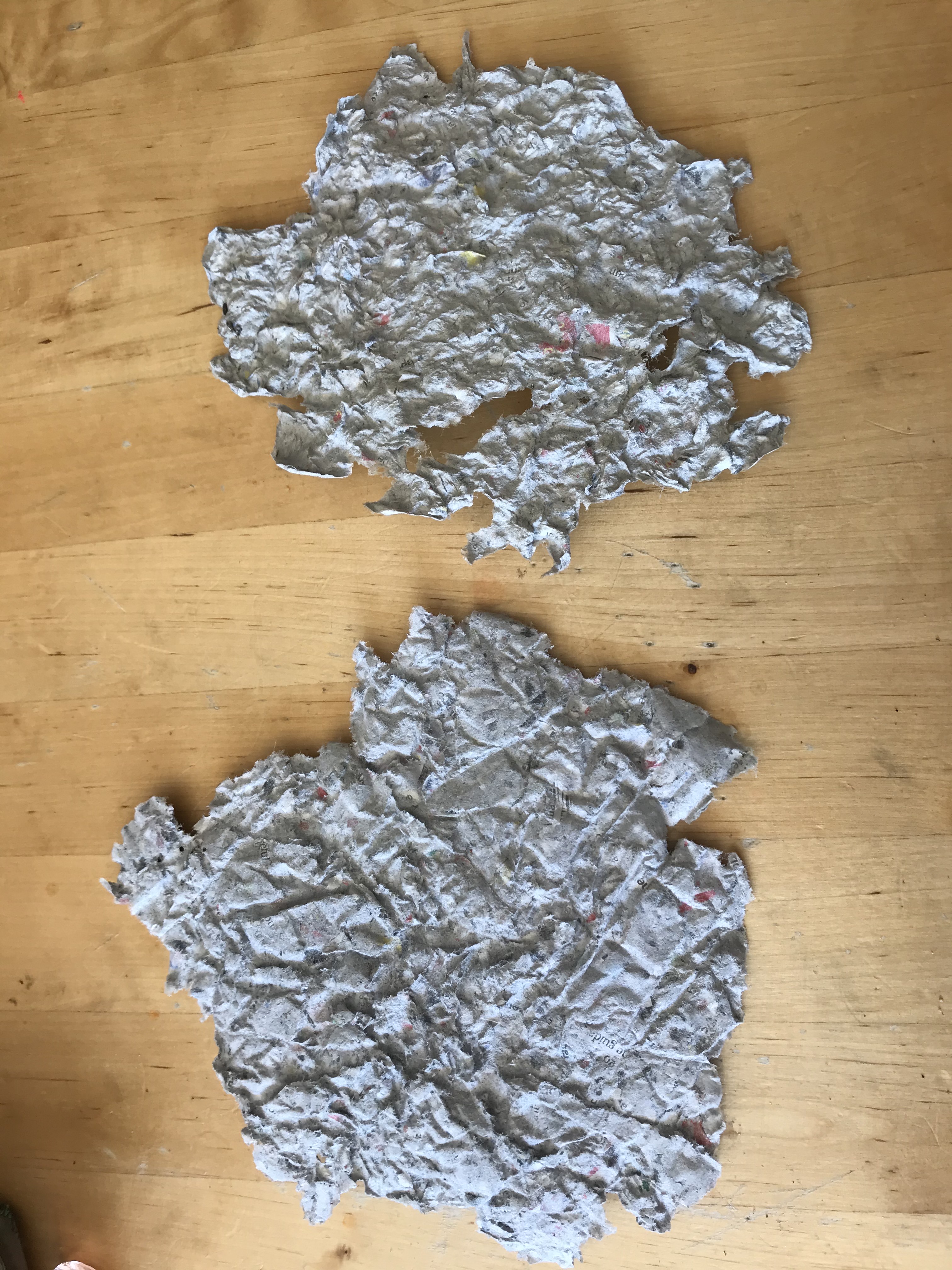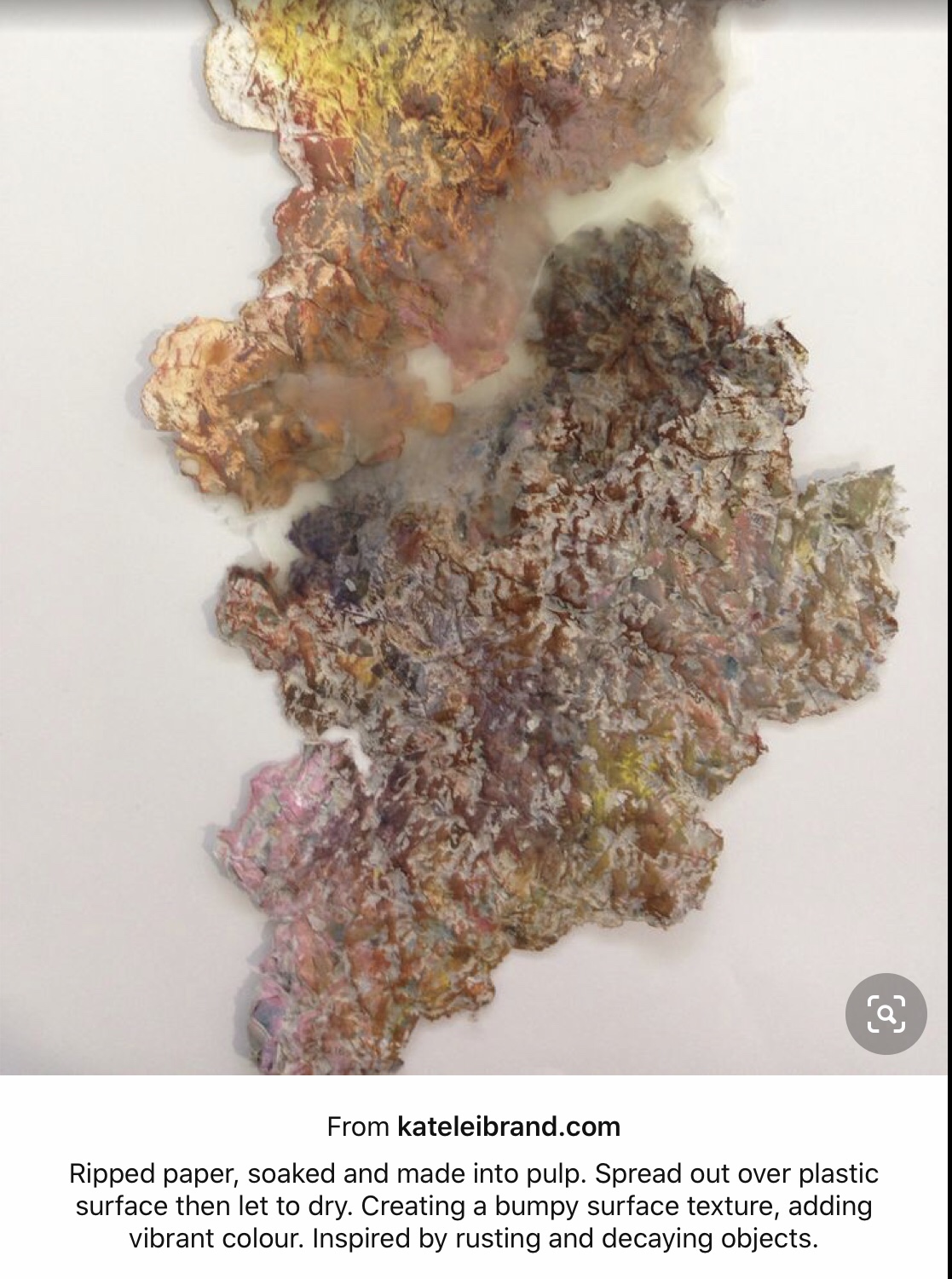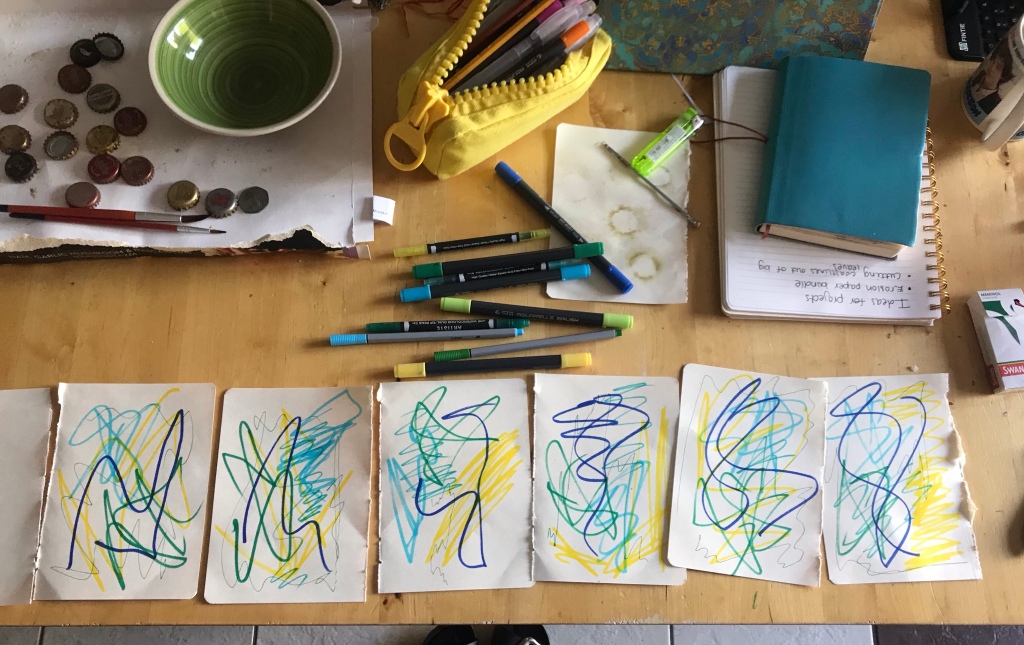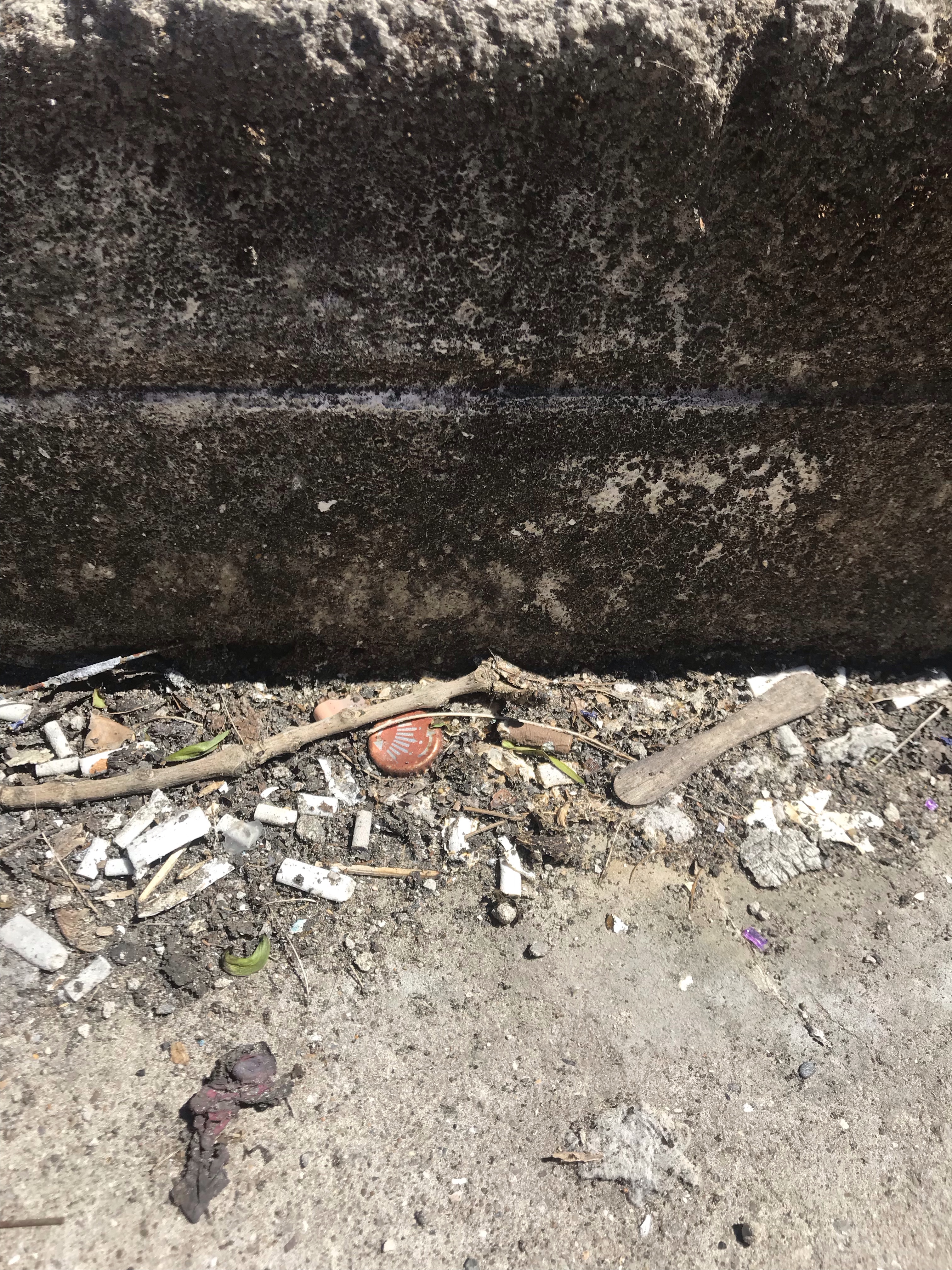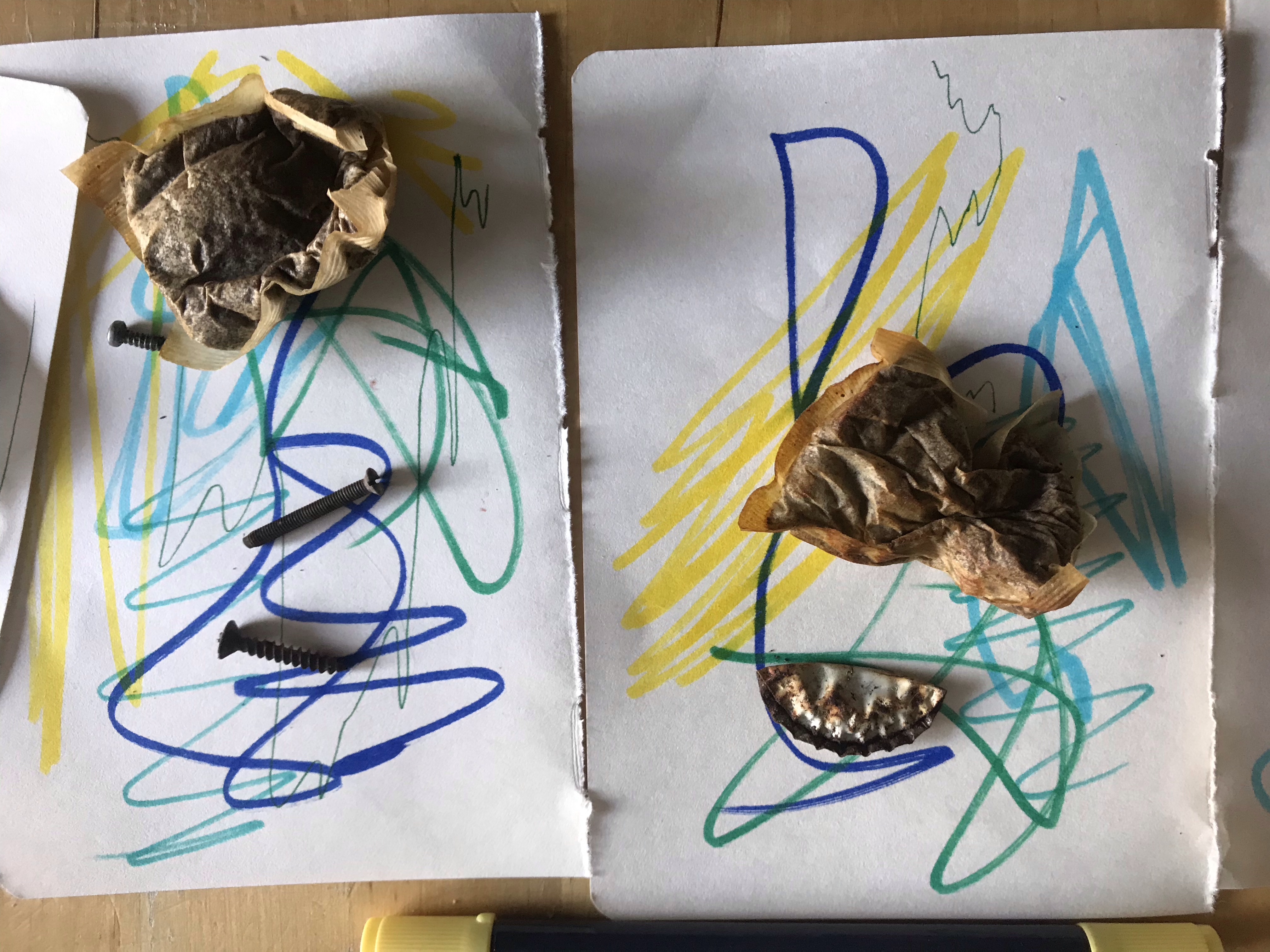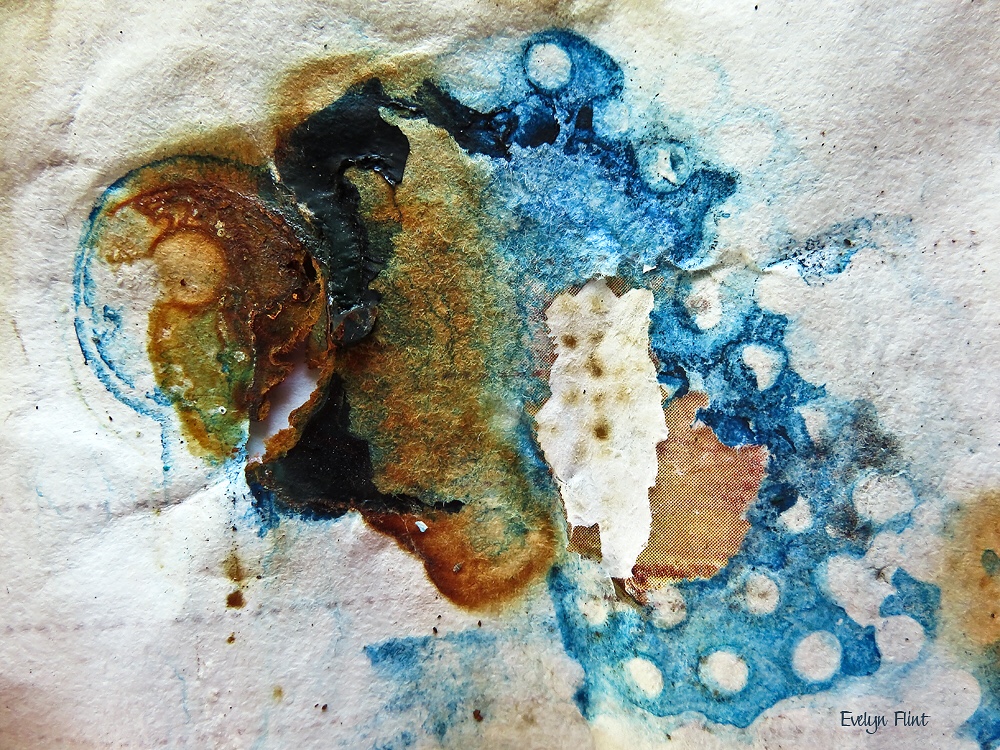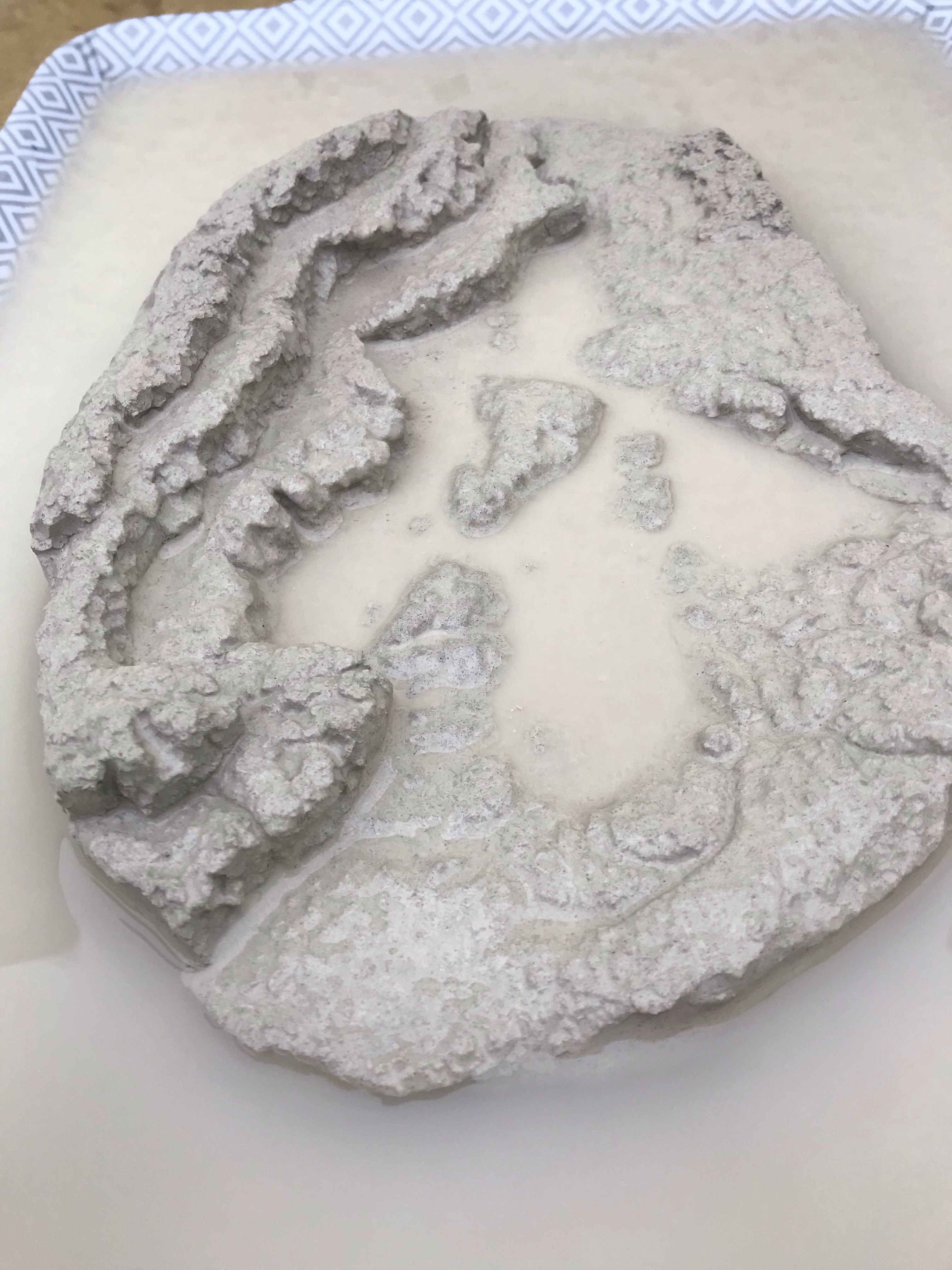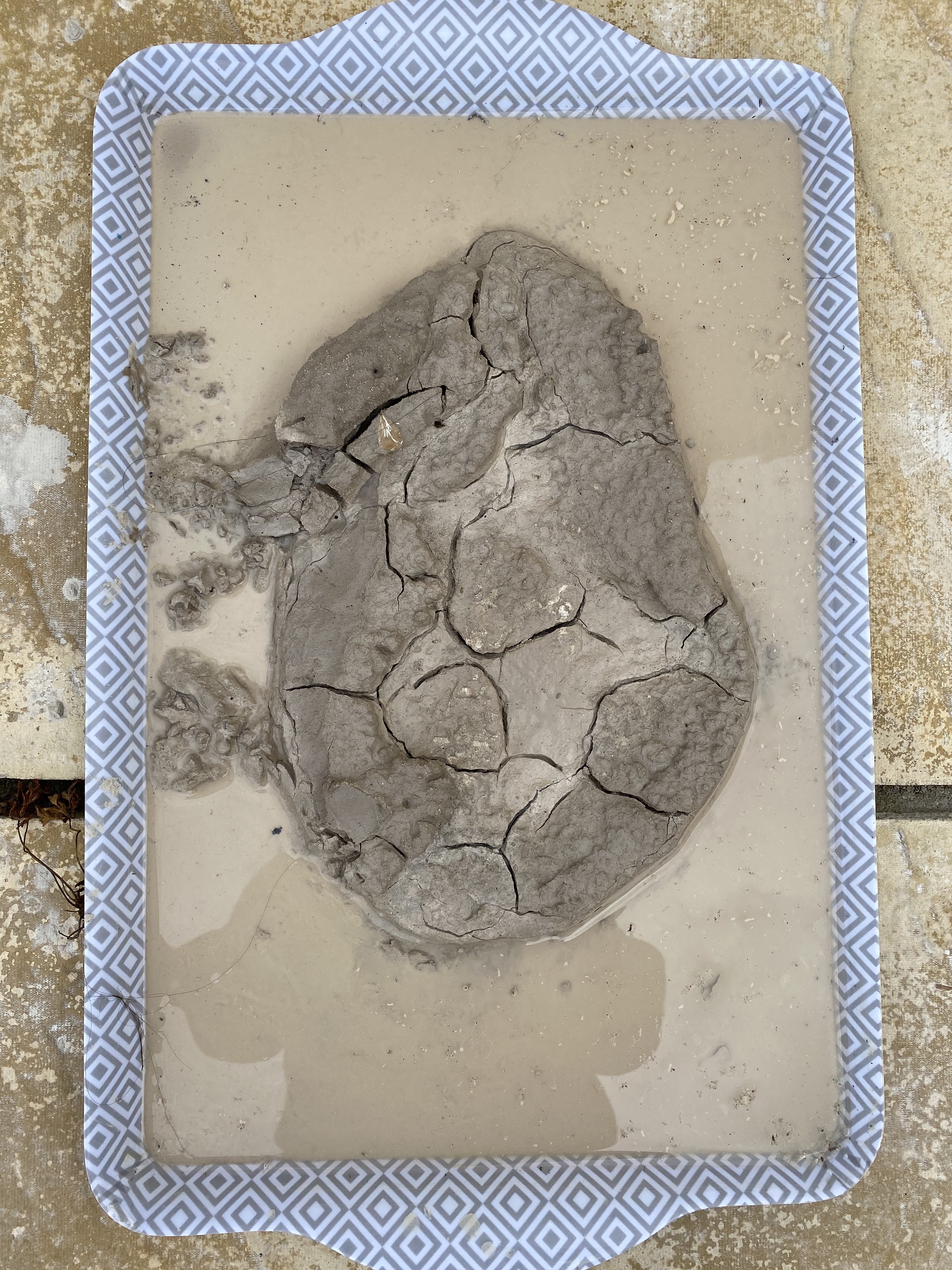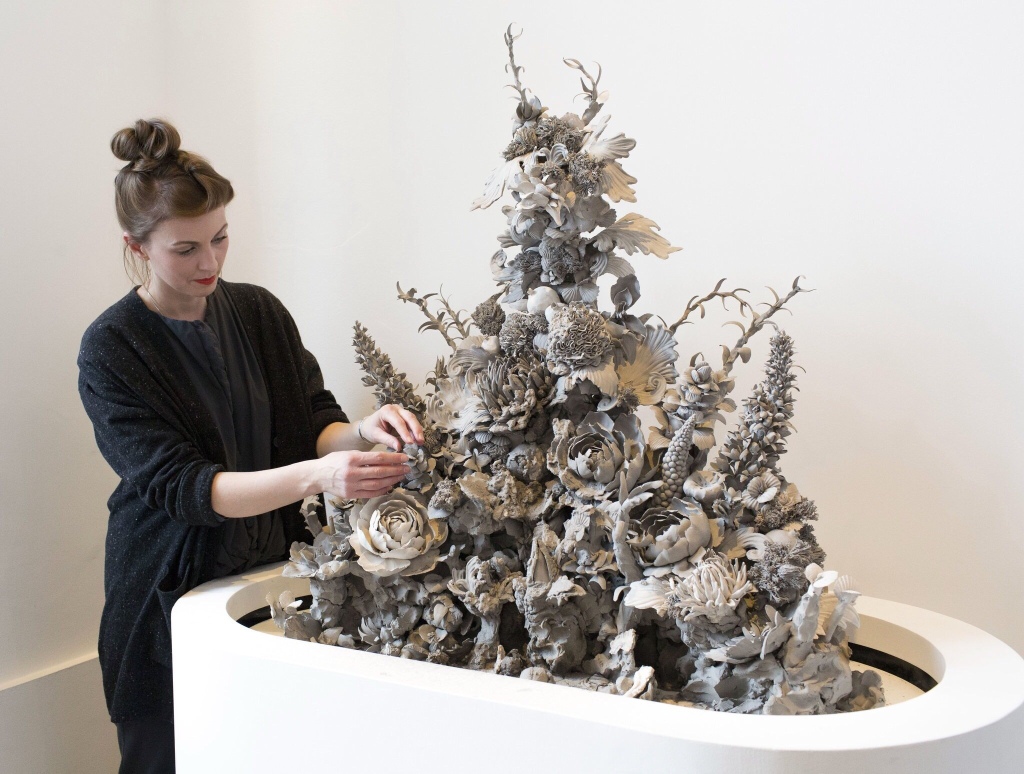After creating my pulp experiment pieces I decided to try and painting them like in images i used for inspiration. However I decided to go with different colours to the inspiration piece as, there’s was based on rusty objects but i wanted mine to fit in with my costal erosion theme.
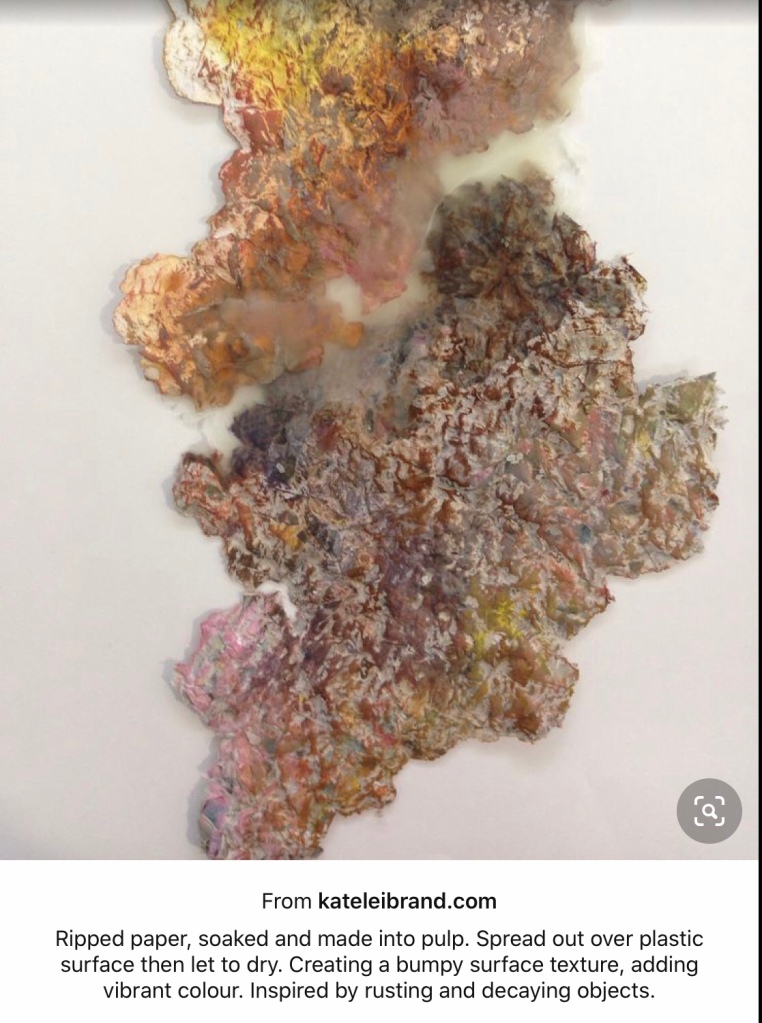
One of the difficult things about painting my pieces is that i only have water colour paints at the moment. I had to balance between getting enough paint on the paper pulp without breaking it apart by using to much water. Ideally i would have used acrylic.

I used a mixture of greys and browns and yellows for the rock texture and blue and greens for the edges to reflect the sea



After some pieces broke away while i was painting I decided to stack them on top to see how it would look. I felt this was very successful it added layers to the pieces and reminded me of the way the Carboniferous limestone forms


I decide to break apart one of the piece and use it to create more layers




I would like to stick these pieces down as i feel it would give the piece a smoother ans more refined look however I’ve only got pritt stick at the moment and i feel that PVA would be the best glue for this job.
Overall I’m really pleased with how this little experiment turned out, using paper pulp to create art was really enjoyable and i ended up creating some successful pieces.




 this is what the undersides of the pulp looked like, the cling film did not seem to give a prominent pattern but the foil produced a lovely texture
this is what the undersides of the pulp looked like, the cling film did not seem to give a prominent pattern but the foil produced a lovely texture 